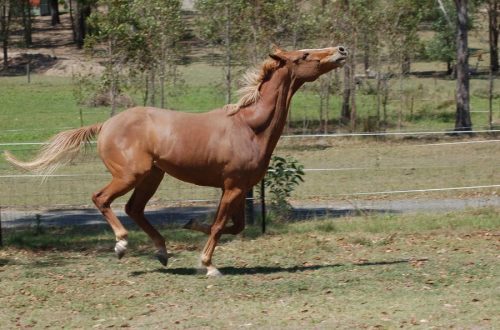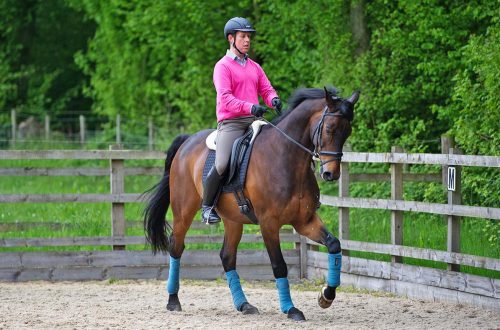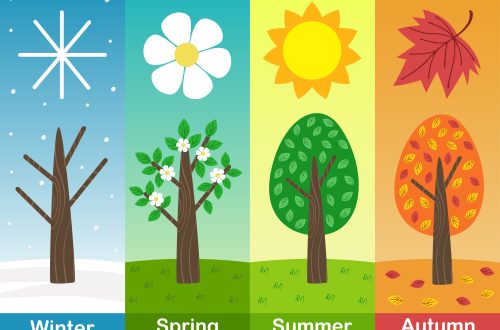
Water is the basis of life!
Water is the basis of life!
And these are not empty words. The horse’s body is 62%-68% water. With age, the water content in the body decreases, this can be seen even in the speed of spreading the tuck in young and old horses.
In absolute terms, the water content means that out of a 500 kg average weight, 300 – 350 kg is water! In fact, a horse is a bag of water with legs! Water is found both in the intracellular space of all cells of the body, and in the extracellular space – in plasma, lymph and in the gastrointestinal tract.
The horse’s posterior intestine is a huge reservoir for storing water. Imagine a baby bath – this is approximately the total volume of the horse’s caecum and large intestine – about 120-130 liters! They are specially designed to store large amounts of liquid! First of all, this allows the horse to quickly replace short-term fluid losses during heavy exercise or in very hot weather and thus not die from dehydration. Of course, the tank must be refilled afterwards.
Equally important is the amount of water in the intestines and for its proper functioning – food is easier to digest and moves through the intestines easier when it literally floats in a large amount of liquid. Lack of water in the intestines can lead to such unpleasant consequences as blockages and torsion.
Water balance in the body is maintained when the same amount of water enters and exits. If at least 2%-3% less water enters than is output, this leads to a loss of efficiency by 10%! And if the lack of fluid is 8% -10%, this is already serious dehydration.
Water intake primarily depends on the amount and type of feed in the horse’s diet. A free-range horse gets most of its fluid from the grass, as the moisture content of the grass is about 80%. From 40-50 kg of grass per day, the horse receives, respectively, 30-40 liters of water. When fed with hay, the ratio of food eaten and water drunk is approximately 1:3-3,5, and when fed with a hay + oat ration, it is 1:2-2,6. Most water attracts beet pulp and other easily soluble fiber: when adding beet pulp to the diet, this ratio can be up to 1: 4-4,5. Accordingly, fecal moisture ranges from 80% on a hay + beet pulp diet to 60%-65% on a hay + oats diet. Protein-rich foods also increase water intake because excess protein metabolism products are excreted in the urine.
In the opposite direction, the food:water ratio also works – if the horse does not have enough water, he begins to eat less.
The temperature and humidity of the environment also greatly affects water consumption. When the temperature drops below zero, consumption decreases somewhat, but when it rises above 30 C (and especially at high humidity), it can almost double.
They drink more from a bucket than from an autodrinker, especially if the autodrinker is reed. At the same time, the amount of water drunk is not affected by whether the horse has constant access to water, or it is drunk several times a day, provided that water is offered in sufficient quantities.
In the cold, horses prefer warm water – with a temperature of 20-30 C, while at a comfortable, thermo-neutral temperature, the water temperature does not affect consumption. Horses drink most of the water, if it is available at all times, during and within two hours after feeding.
The main mineral responsible for maintaining the water balance in the body is sodium. The brain reads the sodium content in the cerebrospinal fluid and, when its level rises, gives a signal to the hormones responsible for the feeling of thirst. When sodium levels decrease, not only does the feeling of thirst not occur, but hormones come into play, signaling the kidneys to excrete less sodium in the urine. Instead, the kidneys begin to excrete potassium, so often when we see a lack of potassium on blood tests, this means that in fact the diet is low in sodium!
Determining dehydration by a biochemical blood test is very simple – just look at the level of total protein. Almost the only reason for the increase in total blood protein in horses is dehydration. Together with the protein, such indicators as urea, creatinine and some others increase, in the general blood test – erythrocytes and hematocrit.
What to do, if you think your horse is drinking less water than he should?
- First of all, check if the horse has the opportunity to drink plenty, and the water is clean and fresh.
- If the horse drinks from a drinker, offer a bucket of water.
- If it’s cold outside, try drinking warm water.
- Check how much salt the horse eats. The norm of salt for a non-working adult horse is about 30 g per day (2 tablespoons). Thus, a two-kilogram lick should be gone in about two months. If the horse eats less salt, add salt to the food or dilute it in water and sprinkle the hay. A working horse needs at least twice as much salt, depending on the intensity and duration of the exercise and the ambient temperature. Water intake has a linear relationship with salt intake. At the same time, excess salt is excreted without problems by the kidneys (along with excess water), provided that the kidneys are healthy, therefore, for reinsurance, it is better to give a little more salt than necessary, rather than a little less.
- Add beet pulp to your diet (soybean shell granules work similarly, but, unfortunately, they are difficult to buy in Russia). First, it can be filled with a large amount of water. Second, by retaining water in the intestines, it encourages the horse to drink more. Instead of pulp, you can add betaine (aka trimethylglycine). This substance, found in beets and some other foods, is an excellent osmoregulator.
Make sure your horses have adequate water intake and you will avoid many problems!
Ekaterina Lomeiko (Sara).
Questions and comments regarding this article can be left in блоге the author.





